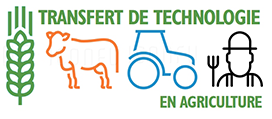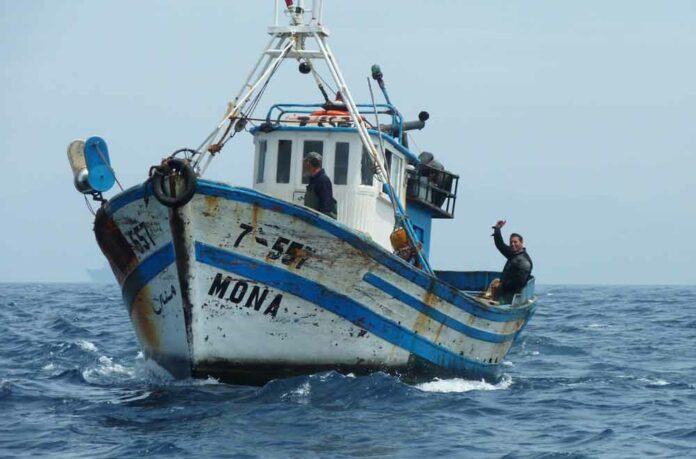CONCLUSION
The data collected in Atlantic Center of Morocco suggests the following interpretation: Coastal purse seiners can generate an annual value-added of about 2 million MAD by vessel (≈ 0.176 million € ≈ 0.248 million $). Their contribution to the food security and to wealth creation, at the national level, is very important and their economic performance may be affected by several factors, such as:
- Vessel size, because performance indicators (return on investment and profit margin) are higher for large vessels (new ships. 9.2% and 9.7 % respectively) compared with small vessels (old ships. 0 % and -0.1 % respectively).
- Structure of operating costs, specifically fuel, social levies, insurances and repairs.
- Landings composition and their destination markets affect directly the performance levels achieved, given the prices offered by specie and by destination market.
The return on investment for all classes of ships is lower than the average annual bank credit interest rate, which was 12.5%. Consequently, these profitability ratio could hinder the regularly renewal of fishing units. But it should be noted that informal sales are not considered. Indeed, these informal sales may improve the rates of return and therefore reverse the situation.
Furthermore, with the average crew size of about 36±5 persons, purse seine fisheries contribute to the creation of employment opportunities, not only for the indigenous population, but also for those from other regions of the Kingdom.
In addition, according to the skippers and vessel owners, as well as crew members, the earnings in recent years have decreased due to the increasing price of fuel (diesel) which rose from 3.88 MAD/liter in 2004 to 6.35 MAD/liter in 2011, against an almost stagnating prices of small pelagics in the same period. The weighted average price of the five main small pelagic species was of 1.45 MAD/kg in 2004 and 1.96 MAD/kg in 2011. In addition, over-fishing on the same fishing grounds may have negatively affected the productivity of the fishery.
To increase wealth generated by small pelagic landings, any modernization or renewal, aimed improving storage conditions on vessels board, are highly recommended. Increasing production capacity for processing industries and creating new products with higher value-added, are a way to increase coastal purse seiners performance. Given the importance of fish prices at the fresh fish market comparatively to other distribution channels, it is also encouraged to promote at the national level, fresh fish consumption through awareness campaigns on the importance of the nutritional values of small pelagic fish.
In order to ensure development synchronization of the small pelagic fish sector from upstream to downstream, it is imperative to support industrial activities generating great value-added, particularly canning industry, and develop necessary infrastructures for fresh fish markets.
This paper provides economic data and performance indicators for some purse seine fisheries in Moroccan Atlantic Centre region. Its results allowed us to deepen our knowledge on this fishery. Nevertheless, there is a need for further studies of these coastal fisheries to inform policy makers in designing and implementing better management. During the next phase, verification and extrapolation of these results should be a subject of an extended study taking into account all ports of the Kingdom.
ACKNOWLEDGEMENTS
The authors wish to thank the National Fisheries Research Institute – Morocco (INRH) and Japan International Cooperation Agency (JICA) for their support to achieve this work.
REFERENCES
DPM, (2009). Stratégie de développement et de compétitivité du secteur halieutique.
FAO, (2013). Report of the FAO Working Group on the Assessment of Small Pelagic Fish off Northwest Africa. Dakar, Senegal, 21-25 May 2012. FAO Fisheries and Aquaculture Report. No. 1036. 256 pp.
FAO, (2015). Report of the FAO Working Group on the Assessment of Small Pelagic Fish off Northwest Africa. Casablanca, Morocco, 20–25 July 2015. FAO Fisheries and Aquaculture Report. No. 1122. 255 pp.
INRH, (2012). Pêcherie des petits pélagiques (Rapport National). Département des Ressources Halieutiques de l’INRH.
Kamili A., Maynou F. (2011). Bioéconomie et gestion de la pêcherie des petits pélagiques – cas de l’Atlantique centre marocain. Dans S. Garcia, M. Tandstad & A.M. Caramelo, eds. Science et aménagement des petits pélagiques. Symposium sur la science et le défi de l’aménagement des pêcheries de petits pélagiques sur les stocks partagés en Afrique nord-occidentale, 11-14 mars 2008, Casablanca, Maroc, FAO Comptes rendus des pêches et de l’aquaculture, No. 18. Rome, FAO. 606 pp.
ONP, (2010). Rapport des statistiques.
Perrien J., Chéron E.J., Zins M., (1986). Recherche en marketing: Méthodes et décisions. Gaëtan Morin (éd.). 615p.
Pham T.T.T., Nguyen K.A.T., Flaaten O. (2008). Economic performance indicators for coastal fisheries – The case of purse seining in south-central Viet Nam. International Institute of Fisheries Economics & Trade (IIFET-Vietnam 2008 proceedings).
Roullot J., Fahfouhi A. (1984). Catalogue des engins de pêches du Maroc. Projets PNUD/FAO INT/81/014 et MOR/81/002. pp 281.
[1] “Halieutis” strategy launched by the Moroccan government in 2010
[2] DPM : Marine Fisheries Department
Source sur Revue Marocaine des Sciences Agronomique et Vétérinaires et ficher PDF
https://www.agrimaroc.org

